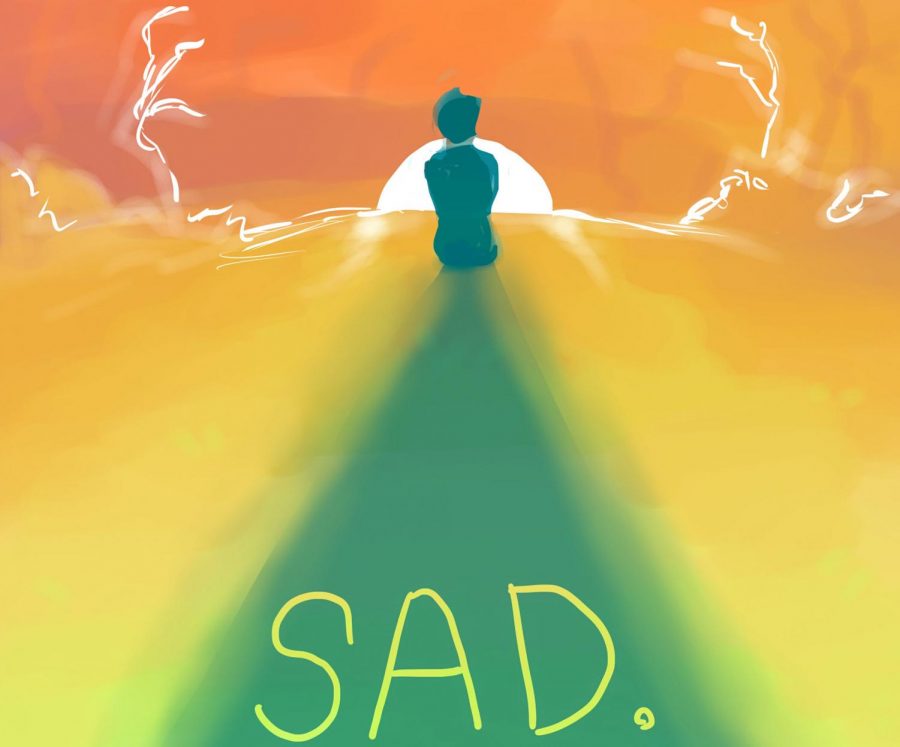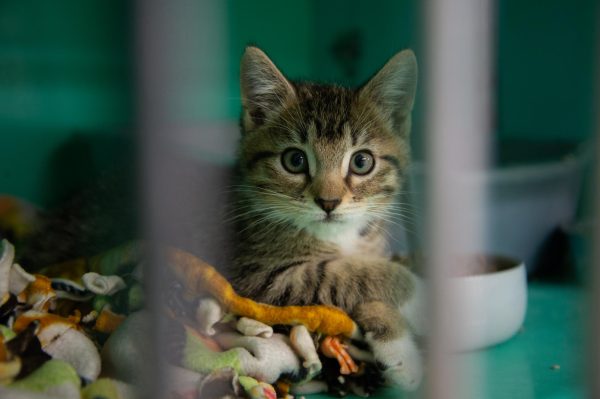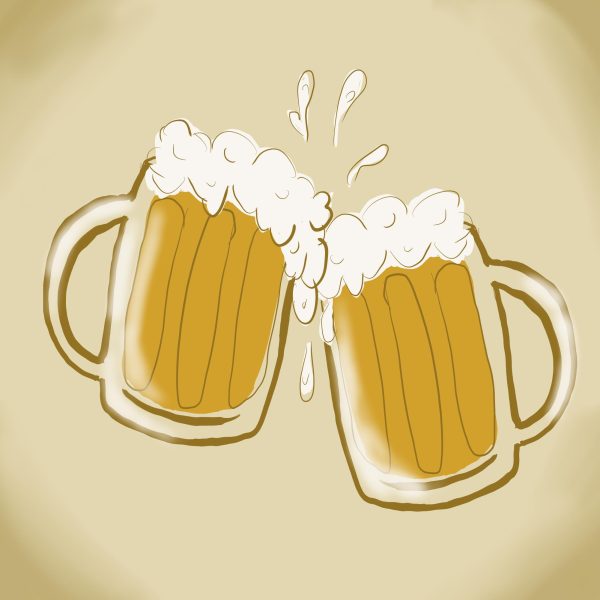Wellness Wednesday: S.A.D. is coming
Seasonal Affective Disorder causes depression increases in the winter months
NATALIE BLAKE | DAILY EVERGREEN ILLUSTRATION
During winter months depression, sleep issues, and thoughts of suicide spike because of Seasonal Affective Disorder. “Basically, Seasonal Affective Disorder is major depression, a significant depression that occurs when we start noticing a decrease in daylight,” said Stacy Pettit, private practice counselor.
November 6, 2019
The winter season is rapidly approaching and here in the Pacific Northwest, that means a significant decrease in the number of daylight hours. Some students and community members may be at risk for experiencing Seasonal Affective Disorder, or SAD.
“Basically, Seasonal Affective Disorder is major depression, a significant depression that occurs when we start noticing a decrease in daylight,” said Stacy Pettit, private practice counselor from Holistic Connections.
The notable symptoms of SAD include depressed feelings, hopeless or worthless feelings, changes in appetite or weight, feeling sluggish, difficulty concentrating, issues with sleep, loss of interest, and thoughts of suicide or self-harm, Pettit said. It is also more prevalent among females and in younger populations such as college students.
“It’s hard to go about your daily life when you feel terrible,” she said.
Practicing mindfulness, light therapy and reaching out for help from others are all good strategies for combating SAD, Pettit said.
“I think a big part of college, being successful and feeling healthy is having a routine,” said Gary Smith, WSU professor of psychology. “If external forces get you out of that routine, that can be a big blow.”
With the daylight hours diminishing, students’ normal scheduled activities may seem far more difficult to accomplish, Smith said.
“It’s a drag to get out of bed in the morning. It’s cold, it’s dark, it’s a drag to go for a walk past 5 p.m. when usually, in summer, we’re out much later,” Smith said.
The lack of sunlight is a regional element of living in the Pacific Northwest, so instead of wasting half of the year being miserable, plan for the change, Smith said. In order to stay on track and maintain their overall wellness, students should focus on getting as much sun as they can, finding new ways to exercise and focusing on what things they can do to feel better overall.
“There are ways to adjust with the season as long as we recognize it and understand that we can be proactive about ways to modify our routine without modifying our self-care,” Smith said.
If students start to notice a clear change in energy, motivation or mood, that is a good indicator that they may be experiencing SAD and should do something about it, Smith said.
“Seek out services that are available on campus, either through CAPS or the psychology clinic, and I know that students hear that a lot, but we mean that as a university,” Smith said. “If it’s interfering with your day to day function, it might be worthwhile having some input from a professional. It doesn’t have to have a diagnosis to be treatable.”
Despite some students’ reservations with seeking counseling, it can be a great tool in maintaining their mental health year-round, Smith said. Internalizing a lack of energy or motivation as a personal failure or flaw is both unproductive and harmful.
“A lot of people who struggle with Seasonal Affective Disorder begin to dread the seasons because of that heaviness that comes over them, the tiredness that seems to consume,” local therapist Mary Stevens said.
She said she recommends that individuals set new parameters with the change in season, such as not saying yes to every party, event or study group and making sure that they have access to the medication or counseling that they may need before symptoms begin to set in.
“Practice self-compassion, watch how you talk to yourself, don’t ridicule yourself and, if you have time and space, making it a priority to do self-care,” Stevens said. “Doing yoga, stretching, drinking water, making sure that you have a vitamin on board and that you’re sleeping. All of those things can be super helpful.”
Talking to a general care provider and making sure that nothing else needs attention in a student’s health is another good way to be proactive, Stevens said.
“You have dead week and then finals, the scary snow-driving, and travel for a lot of people who are already maxed out,” Stevens said. “That can feel really overwhelming.”
Additionally, the anticipation of Seasonal Affective Disorder can be a negative self-fulfilling prophecy. Instead of becoming anxious, try to focus on self-care and positive self-talk, Stevens said.
“Decriminalize it. When someone who is diabetic is going to have a meal, they look at their meal and they know how to calibrate how much insulin they need. The same is true for a person who goes through seasonal affectiveness,” Stevens said.
Above all, students should not blame themselves for their body’s natural response to the lack of sunlight, compounding stress from their academics and travel that comes with the holidays, Stevens said.
“Experiencing Seasonal Affective Disorder has nothing to do with your efficiency as a student or your work integrity. It’s not a moral issue. It’s not a personal failure. Seasonal affectiveness is simply a reaction that our body has to the environment that we’re in,” Stevens said.
Reducing self-criticism and reaching out to the people that care is the first step in mindfully approaching the changing seasons, she said.
“When we look at a tree in the fall, we don’t fault the tree for changing its colors and dropping its leaves. And the same should be held true for us,” Stevens said.
Cougar Health Services were unavailable to comment at this time but suggest visiting the National Institute of Mental Health website as well as reading the article “Seasonal Affective Disorder: An Overview and Update” from the peer-reviewed journal Psychiatry.
Counseling and Psychological Services have two light therapy lamps available for students on a first-come, first-serve basis without an appointment. They are located on the second and third floors of the Cougar Health Services building.






















Robert Lackman • Nov 6, 2019 at 8:35 pm
I was diagnosed with SAD in 98 after three years of misery after a company relocation from Florida to a windowless office in RTP NC. Knowledge is power. I can trace my mood back to the sunny ness of where I lived back to the early 60s. Knowing the problem it was easy to treat the symptoms. The SAD specialist at UNC medical school who gave me an official diagnosis unofficially determines my ten year old daughter also had it. It’s not surprising since SAD runs in families. My family MD who sent me to the specialist was fascinated to see how clearly my weight chart correlated with the season, another symptom. Please get help if you show signs of SAD. Treatment is simple. In most cases using a SAD lamp is sufficient.